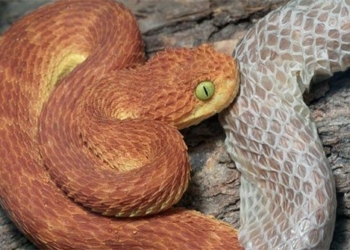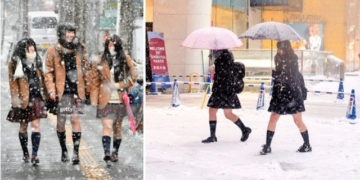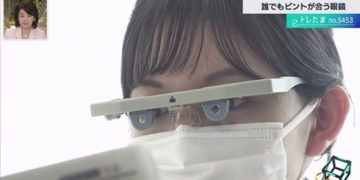Poison Ivy – a plant that appears harmless but is a nightmare for campers, as it can cause rashes for anyone who accidentally touches it. What makes this plant so toxic?
Poison Ivy and its relatives: Poison Oak and Poison Sumac belong to the genus Toxicodendron. This plant is commonly found throughout the United States, except for Alaska and Hawaii; it also grows in various other continents around the world.
At first glance, poison ivy looks like a vine creeping along the grass. It can also thrive in shrubs in colder climates. The leaves typically grow in clusters of three, although some plants may have leaves that grow in clusters of five or more, depending on the soil and climate.
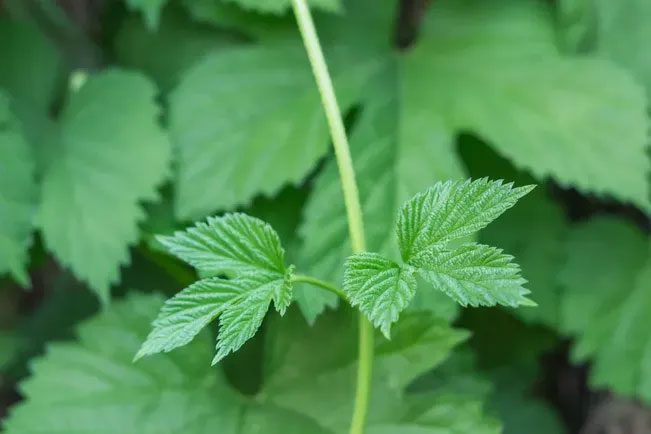
Poison Ivy Leaves.
The harmful effects of poison ivy were first documented in 1609 by the English explorer John Smith, who established the first English settlement in Jamestown, Virginia, USA.
According to John Smith’s description: “It is a poisonous herb, shaped somewhat differently than common ivy. Touching it will cause redness, itching, and eventually blisters. However, after some time, the wounds will heal on their own without deep damage.”
Why Poison Ivy Causes Rashes
Poison ivy and many plants classified under the Toxicodendron group produce a toxic oil known as urushiol. Poison ivy produces this oil to deter herbivores from eating its leaves.
When we come into contact with the leaves, urushiol penetrates the skin. This substance then reacts with certain skin proteins and immune cells, causing inflammation, also known as rashes.
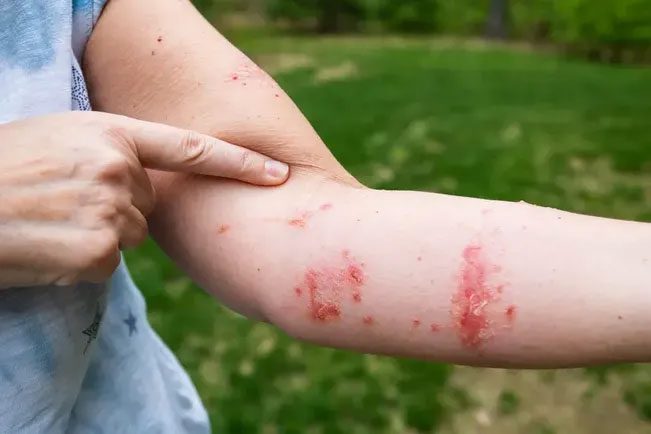
Rash Condition from Touching Poison Ivy.
Not only does it cause harm through direct contact with the leaves, but the oil from poison ivy can also spread through contact with other surfaces. For example, if a dog comes into contact with the plant and oil remains on its fur, petting the dog can transfer urushiol from the dog to your hands.
In medical terms, this rash is called contact dermatitis. It describes any condition that causes skin inflammation after contact. This condition is quite common in the United States due to the prevalence of poison ivy. A study from the 1950s indicated that poison ivy is the most harmful plant in North America, causing many people to develop rashes after contact. To this day, contact dermatitis caused by poison ivy remains common in North America, affecting about 50 million Americans each year.
Interestingly, the rash does not form immediately after contact with urushiol but typically appears 1 to 3 days later.
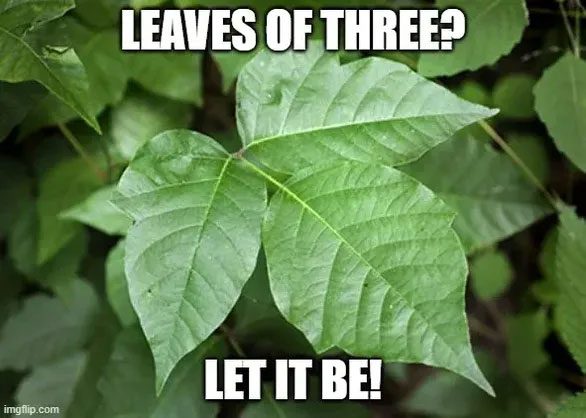
These leaves may look harmless, but don’t touch them.
Why Does the Rash Not Appear Immediately After Touching Poison Ivy?
Thus, the reason poison ivy is dangerous is primarily due to the allergen urushiol. Most people are allergic to this toxin. Statistics show that about 85% of Americans are allergic to urushiol, with very few lucky enough to be unaffected.
However, a rash does not form after the first exposure to urushiol but rather from the second exposure onward. The more frequent the exposure, the higher the risk of a more severe rash.
This is because touching poison ivy triggers an immune response in the body known as delayed hypersensitivity reaction. This is a type of body response that occurs slowly after exposure to an allergen, and the severity of tissue damage increases.
When urushiol penetrates the body through the skin, it binds with proteins in our skin to form complexes. These complexes are recognized by the immune cells in the body as foreign entities and are eliminated. The immune cells involved in this process include two types: antigen-presenting cells and helper T cells. Their function is to alert the immune system to toxins and foreign microbes invading the body. They act as soldiers protecting our body from “invaders.”
The first time urushiol penetrates the skin, immune cells recognize the skin-urushiol protein complexes as “foreign agents” and gently eliminate them.
The immune system of our body is extremely intelligent and has a remarkable memory, capable of remembering nearly all microbes or toxins it encounters. However, this can sometimes be a disadvantage. The second time urushiol enters the skin, these immune cells recognize these complexes and think they are facing another invasion.
To assert their authority, immune cells activate a stronger response. Helper T cells produce several signaling molecules known as cytokines. These cytokines signal for reinforcements, and at this point, other immune cells like macrophages join the fight.
Macrophages release certain enzymes that break down proteins called lytic enzymes, which act to dismantle the skin-urushiol protein complexes. These enzymes are very potent and cause significant damage to the tissues surrounding the site of urushiol contact. As a result, rashes and eventually blisters gradually appear.
This immune response takes time to establish, so the rash may take anywhere from a few hours to 3 days to form, depending on how quickly your body reacts to urushiol.
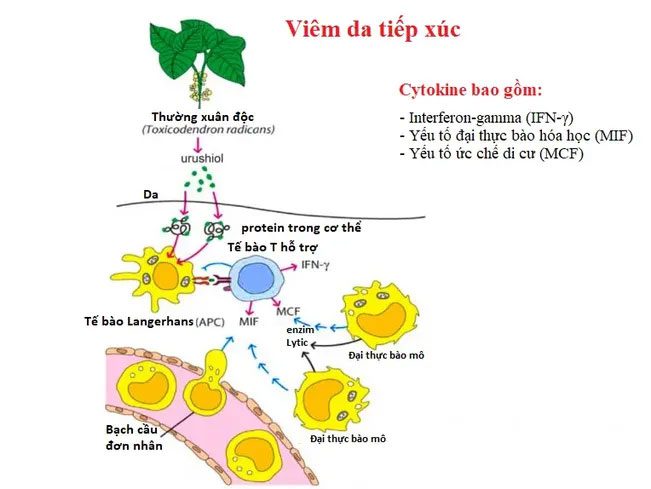
Delayed hypersensitivity reaction occurs when the body comes into contact with urushiol in poison ivy.
Unfortunately, every time we touch poison ivy, a series of unfortunate events repeat. Each time, our body launches a more robust response. Therefore, even if you do not have a severe reaction to the poison ivy toxin on the first exposure, repeated contact can lead to severe allergies.
There is no specific treatment for contact dermatitis other than prevention. Try to stay away from poison ivy. If you accidentally touch it, quickly wash the contact area with soap and water to remove urushiol. This is very helpful if done within the first 5 minutes.
Additionally, you can try applying a little calamine lotion to soothe the rash. If the condition does not improve, contact a doctor for treatment and pain relief.










































